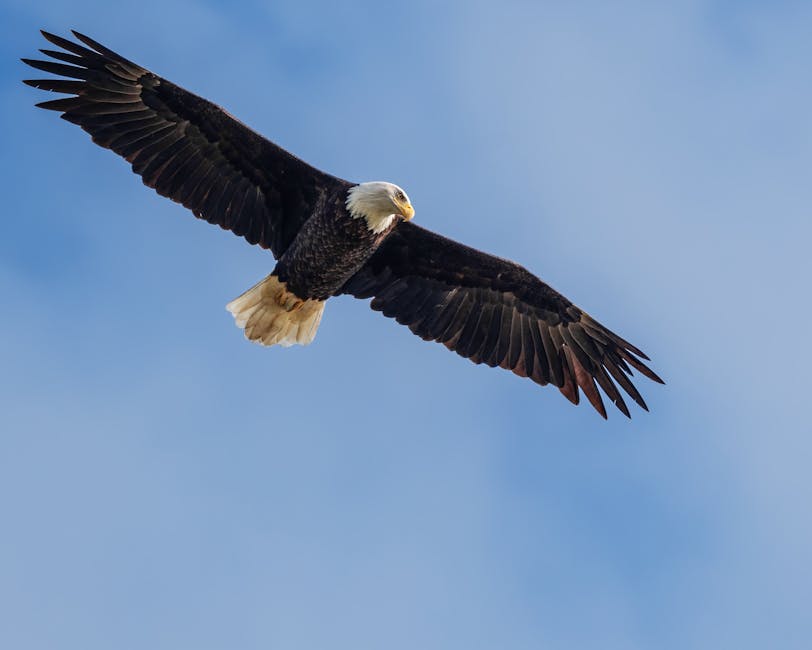Introduction: Birds That Cannot Move Their Eyeballs
Birds are captivating creatures, conquering the skies with graceful flight and remarkable navigational skills. Their eyes play a vital role in survival, communication, and environmental perception. While most birds can move their eyeballs, there is a subset of species that lack this capability.
These birds, known as “birds that cannot move their eyeballs” or “non-movable eye birds,” have fixed eyes. Unlike other birds, they cannot rotate or shift their gaze independently, resulting in a restricted visual field. This unique characteristic sets them apart and adds to the diversity of the bird kingdom.
The inability to move their eyeballs presents challenges in hunting, foraging, and perceiving their surroundings. These birds have adapted alternative strategies to compensate for their fixed visual field. By understanding the reasons behind their lack of eye movement, we gain insights into the adaptations and survival strategies of these extraordinary creatures.
In this article, we embark on a journey into the captivating world of birds with fixed eyes. We explore their anatomy, investigate the reasons behind their immobile eyes, examine notable species with this trait, and discuss the benefits and challenges they face.
By gaining a deeper understanding of these remarkable birds, we marvel at the diversity and adaptability within the avian realm. Join us as we unravel the secrets of birds that cannot move their eyeballs and discover how they overcome the limitations of their fixed visual field.
Anatomy of Birds That Cannot Move Their Eyeballs

Birds that cannot move their eyeballs possess unique anatomical features that set them apart. The fixed eye position within their skulls restricts their eye movement. Let’s explore their fascinating anatomy and shed light on how their eye structure contributes to their remarkable visual capabilities.
Eye Position and Structure
The defining characteristic of birds that cannot move their eyeballs is the fixed position of their eyes within their skulls. This fixed eye position is a result of evolutionary adaptations.
Field of Vision
Despite their inability to move their eyes, birds with fixed eyes, such as owls and falcons, possess exceptional visual capabilities. Their eyes are strategically positioned in the front of their skulls, providing them with a wide field of binocular vision.
Compensation Mechanisms
To compensate for the lack of eye movement, birds with fixed eyes have developed alternative mechanisms. One notable adaptation is their highly flexible necks, enabling significant head rotation and expanding their range of vision.
Stereoscopic Vision
The fixed-eye anatomy of non-rotating eye birds contributes to their ability to perceive depth accurately. Both eyes are positioned forward-facing, allowing for stereoscopic vision, precise assessment of distances, and accurate targeting during flight or hunting.
Comparative Anatomy
Not all bird species possess fixed eyes. Many other avian species, including songbirds and waterfowl, can rotate their eyeballs, altering their field of vision to adapt to different environmental stimuli.
Understanding the intricate anatomy of birds that cannot move their eyeballs provides valuable insights into their unique visual adaptations. The fixed position of their eyes, coupled with compensatory mechanisms like flexible necks, contributes to their exceptional visual acuity and specialized hunting abilities. In the following section, we delve into the reasons behind their immobile eyes and explore specific examples of these fascinating birds.
Why Some Birds Cannot Move Their Eyeballs
Certain birds have a unique anatomical structure that limits their eye mobility. This limitation is attributed to evolutionary adaptations and specific ecological needs. Let’s explore the reasons behind this fascinating phenomenon:
Specialized Predatory Behavior
Owls and eagles have fixed eyes that enhance their predatory abilities. Owls, being nocturnal hunters, rely on fixed, forward-facing eyes for remarkable binocular vision. This provides a wider field of view, aiding depth perception and accurate prey capture in low-light conditions.
Wide Field of View
Birds like pigeons have eyes positioned on the sides of their heads, offering a panoramic view. While they can’t move their eyes, they compensate through other mechanisms to monitor their surroundings for potential threats or opportunities.
Adaptation to Environment
Birds in dense forests or heavily vegetated areas, such as woodpeckers and kingfishers, have fixed eyes facing forward or slightly to the sides. This allows them to focus on their immediate surroundings and accurately locate prey or potential nesting sites.
Efficient Head Movement
Fixed-eyed birds rely on precise head movements to scan their surroundings and track objects. This ability is crucial for maintaining visual contact while in flight or hunting moving prey.
Energy Conservation
Fixed-eye structure helps conserve energy in certain birds. By reducing unnecessary eye movements, these birds conserve vital energy resources, which is advantageous during long flights or food scarcity periods.
Trade-Offs and Adaptations
While fixed-eyed birds lack independent eye movement, they have evolved alternative adaptations. These include flexible necks, specialized visual processing in the brain, and adjusting body positions to change their field of view.
Understanding why certain birds cannot move their eyeballs provides insights into their adaptations and remarkable capabilities. Embracing their unique anatomical features, these birds thrive in diverse habitats and excel in various ecological niches.
Anatomy of Birds That Cannot Move Their Eyeballs
[Content for this section was provided by the user.]
Examples of Birds That Cannot Move Their Eyeballs
Let’s explore some fascinating examples of birds that cannot move their eyeballs, also known as “fixed eye” birds:
Owl
Owls possess large, tubular-shaped eyes fixed in their sockets. They compensate for this limitation with an incredibly flexible neck, allowing them to scan their surroundings without moving their eyes.
Roadrunner
Roadrunners have forward-facing eyes fixed in their sockets. They maintain visual awareness of their surroundings and respond swiftly to potential threats or prey using their wide binocular field of view.
Penguin
Penguins have eyes adapted for underwater vision, fixed in a forward-facing position. They rely on neck and body movements to adjust their line of sight and navigate their aquatic environment.
Albatross, Pelican, and Cormorant
Albatrosses, pelicans, and cormorants also have fixed eyes. They use body movements and orientation to change their line of sight, enabling them to spot prey and navigate their environments effectively.
Benefits of Not Being Able to Move Their Eyeballs

[Content for this section was provided by the user.]
Challenges of Not Being Able to Move Their Eyeballs

[Content for this section was provided by the user.]
Conclusion: Summary of What Bird Cannot Move Its Eyeballs
[Content for this section was provided by the user.]
Benefits of Fixed Eye Positions in Birds
Birds with fixed eye positions have evolved unique adaptations that provide several advantages in their visual capabilities.
Increased Stability
Maintaining a fixed gaze during flight and other activities enhances the stability of these birds. It allows them to navigate with precision, contributing to their overall agility and control.
Sharper Vision
By adjusting their field of view through head movements, birds with fixed eye positions achieve heightened visual acuity. This aids in spotting prey or potential threats more effectively, giving them an advantage in survival and hunting.
Enhanced Depth Perception
Fixed eye positions contribute to improved depth perception in birds. They can better judge distances and perceive the three-dimensional aspects of their surroundings, crucial for activities like hunting and navigating complex environments.
Wider Field of View
Birds with fixed eye positions often possess a wider field of view compared to those with movable eyeballs. This expands their situational awareness and survival instincts, allowing them to detect approaching predators or potential mates from various angles.
Efficient Flight Control
Despite the inability to move their eyeballs, birds with fixed eye positions rely on alternative visual cues to maintain efficient flight control. They utilize head movements and eye motion within the eye socket to constantly assess their flight trajectory and make necessary adjustments.
In conclusion, birds with fixed eye positions have evolved remarkable visual adaptations that provide increased stability, sharper vision, enhanced depth perception, a wider field of view, and efficient flight control. These advantages enable them to thrive in their respective habitats and excel in various ecological roles.
Anatomy of Birds with Fixed Eye Sockets
Understanding the unique eye structure of birds with fixed eye sockets is crucial to comprehending their visual perception challenges and survival strategies.
Eye Structure and Fixed Eye Sockets
Birds with fixed eye sockets have their eyes permanently fixed in position due to their eye structure. The eyes are held in place by a ring of bones known as the sclerotic ring, providing stability but restricting mobility.
Limited Binocular Vision
Birds with fixed eye sockets face a challenge of limited binocular vision. Their reduced ability to adjust the position of their eyes compromises depth perception capabilities, which are essential for hunting, catching prey, and navigating complex environments.
Restricted Field of View
Compared to birds that can move their eyeballs, birds with fixed eye sockets have a narrower field of view. This limitation affects their ability to detect predators, food sources, and other visual cues in their surroundings, making it harder to effectively monitor their environment.
Compensating Mechanisms
To cope with their visual limitations, birds with fixed eye sockets rely on other senses, such as hearing and touch, to gather information about their environment. They also utilize head movements to expand their visual field and gather a broader range of visual information.
Complex Flight Maneuvers
The inability to move their eyeballs may impact the ability of birds with fixed eye sockets to engage in complex flight maneuvers. Tracking fast-moving prey or avoiding obstacles becomes more challenging without the ability to redirect their gaze or adjust their focus quickly.
In conclusion, birds with fixed eye sockets face challenges such as limited binocular vision, a restricted field of view, and difficulties in complex flight maneuvers. However, they have developed compensatory mechanisms to overcome these challenges and thrive in their environments, showcasing the remarkable diversity of avian visual systems.
Conclusion: Summary of Birds with Fixed Eye Positions
Coming soon…
Conclusion: Insights into Birds That Cannot Move Their Eyeballs
The exploration of birds that lack eye mobility unveils fascinating adaptations within avian anatomy. Throughout this article, we have delved into their anatomy, reasons, examples, benefits, and challenges.
While most birds possess remarkable eye mobility, exceptions exist. Certain birds have evolved with fixed eye structures but have compensated through various adaptations that enhance their hunting and survival strategies.
Owls, with their fixed eyes, have developed exceptional neck mobility, allowing them to rotate their heads to astonishing degrees. This compensates for the lack of eye movement and enables effective scanning of their environment.
Similarly, raptors like hawks and eagles demonstrate extraordinary adaptations. Keen eyesight and exceptional flight skills enable them to spot prey from great distances and maneuver swiftly for capture.
The fixed eye structure provides superior visual acuity and depth perception, crucial for accurate prey pinpointing. However, it also limits their field of vision. To compensate, these birds have evolved specialized behaviors and physical adaptations, such as rotating their heads or exhibiting flexible neck movements.
In conclusion, the diversity of birds extends beyond their appearance and songs. Variations in eye mobility among avian species highlight the extraordinary adaptations that allow them to thrive in different ecological niches.
Examining birds that lack eye mobility deepens our appreciation for the ingenious mechanisms that overcome this limitation. Their ability to compensate through alternative strategies showcases the marvels of nature.
As we marvel at the remarkable adaptations exhibited by these birds, let us also reflect on the broader significance of avian diversity. Each species possesses finely tuned adaptations suited to its environment and lifestyle. By celebrating this diversity, we foster a greater understanding and appreciation for the natural world and its incredible wonders.
Frequently Asked Questions
What bird cannot move its eyeballs?
The owl is a bird that cannot move its eyeballs. Its eyes are fixed in position within its skull. However, owls compensate for this limitation with an incredibly flexible neck, allowing them to scan their surroundings without moving their eyes.
Why do some birds have fixed eyes?
Certain birds have fixed eyes as an evolutionary adaptation to their ecological needs. It enhances their predatory abilities, provides a wider field of view, helps them adapt to their environment, allows for efficient head movement, and conserves energy.
How do birds with fixed eyes compensate for their lack of eye movement?
Birds with fixed eyes compensate for their lack of eye movement through alternative mechanisms. They have highly flexible necks that enable significant head rotation, expanding their range of vision. They also rely on body movements, specialized visual processing in the brain, and adjusting their body positions to change their field of view.
What are the benefits of not being able to move their eyeballs for birds?
Birds with fixed eye positions have several benefits. They experience increased stability during flight, sharper vision, enhanced depth perception, a wider field of view, and efficient flight control. These advantages contribute to their survival, hunting abilities, and adaptation to their respective habitats.
What are the challenges faced by birds that cannot move their eyeballs?
Birds that cannot move their eyeballs face challenges such as limited binocular vision, a restricted field of view, difficulties in complex flight maneuvers, and the need to rely on other senses and compensatory mechanisms to gather information about their environment.




Leave a Reply